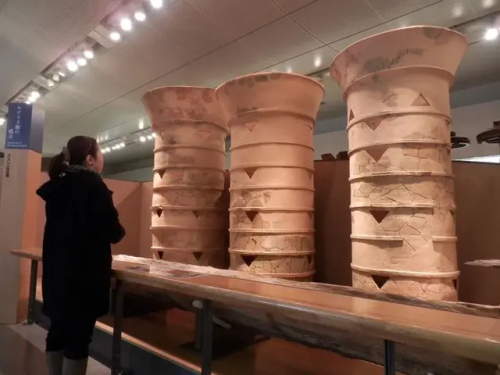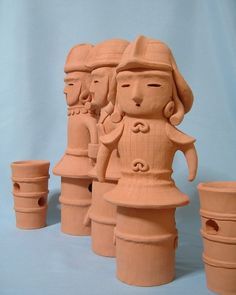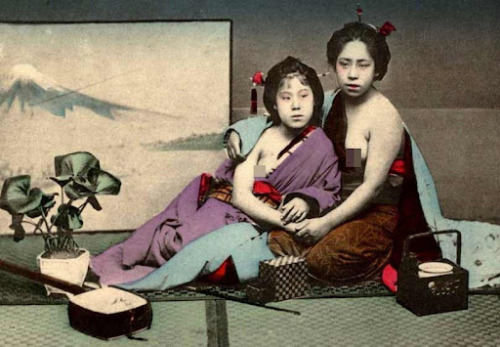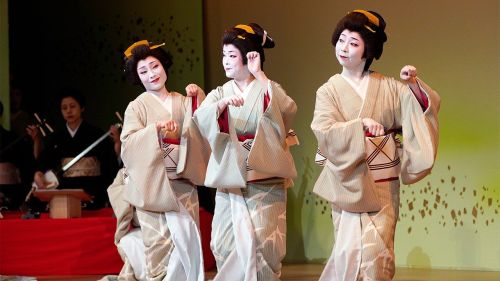Sean Bienvenidos Japonistasarqueologicos A Una Nueva Entrega De Arqueología Japonesa En Esta Ocasión





Sean bienvenidos japonistasarqueologicos a una nueva entrega de Arqueología Japonesa en esta ocasión nos trasladamos a la prehistoria japonesa dicho esto pónganse cómodos que empezamos. - Tengo el placer de presentaros a las esculturas Haniwa, ¿Qué significa este término?¿Cuándo surgió? Y ¿Cuál era su funciones? - Las primeras preguntas para este capítulo serán: ¿Cuándo surgió? Datan de los siglos VI y VII d.C Como ya comenté en varias ocasiones la cronología japonesa es difícil de entender para ojos occidentales ya que hay que verla con ojos orientales. - La segunda pregunta será ¿En donde podemos encontrar estas obras de arte?: La Podemos encontrar en multitud de lugares pero vengo a destacar uno en especial se trata de uno de los mejores juegos de Nintendo y su nombre es Atsumare Dōbutsu no Mori. - Espero que os haya gustado el capítulo 1 y nos vemos en los próximos capítulos de esta serie de historia y arqueología un cordial saludo.
-
日本考古学へようこそ。新しい日本考古学へ。今回は日本の先史時代に移ります。そうは言っても、気を楽にして始めましょう。
-
埴輪彫刻についてご紹介させていただきます。この言葉はいつ頃から生まれたのでしょうか?そしてその機能は何だったのでしょうか? - この章の最初の質問は次のとおりです。それはいつ出現しましたか?それらは西暦 6 世紀から 7 世紀のものです。 すでに何度か述べましたが、日本の年表は東洋の目で見なければならないため、西洋の目には理解しにくいものです。
-
2 番目の質問は次のとおりです。これらの芸術作品はどこで見つけることができますか?: さまざまな場所で見つけることができますが、特に 1 つを取り上げます。これは任天堂の最高のゲームの 1 つであり、その名前は「あつまれ どうぶつの森」です。
-
第 1 章を気に入っていただければ幸いです。この歴史と考古学シリーズの次の章でもお会いしましょう。
-
Welcome japonistasarqueologicos to a new installment of Japanese Archaeology. This time we move to Japanese prehistory. Having said that, make yourselves comfortable as we begin.
-
I have the pleasure of introducing you to the Haniwa sculptures. What does this term mean? When did it emerge? And what were its functions?
-
The first questions for this chapter will be: When did it emerge? They date back to the 6th and 7th centuries AD. As I have already mentioned on several occasions, Japanese chronology is difficult to understand for Western eyes since it must be seen with Eastern eyes.
-
The second question will be: Where can we find these works of art? We can find them in many places, but I am here to highlight one in particular. It is one of the best Nintendo games and its name is Atsumare Dōbutsu no Mori.
-
I hope you liked chapter 1 and I will see you in the next chapters of this series of history and archaeology. Best regards.
More Posts from Noticiasarquelogicasjaponesas and Others







Sean bienvenidos japonistasarqueológicos a una nueva entrega sintética de arqueología japonesa, en la cual hablaremos de el Túmulo funerario Kengushizuka, una vez dicho esto pónganse cómodos que empezamos. - El Túmulo funerario Kengushizuka, se localiza en Koe, pueblo de Asuka, distrito de Takaichi la prefectura de Nara, se construyó en el periodo Asuka lo que sería a finales del siglo VII. En el Nihon Shoki son las Crónicas de Japón en el que se afirma que en el 667d.c en el reinado de la emperatriz Saimei. - Espero que os haya gustado os deseo una buena semana y nos vemos en próximas publicaciones del país del sol naciente. - 日本の考古学者を迎えての新しい総合回です。今回は「牽牛子塚古墳」についてお話しします。どうぞごゆっくりとお過ごしください。 - 奈良県高市郡明日香村小江にある牽牛子塚古墳は、飛鳥時代、7世紀後半に築かれた古墳です。 日本書紀』には、西暦667年、斉明天皇の時代と記されている。 - 楽しんでいただけたなら幸いです。良い一週間をお過ごしいただき、日出ずる国から今後の出版物でお会いできることを祈ります。 - Welcome Japanese archaeologists to a new synthetic installment of Japanese archaeology, in which we will talk about the Kengushizuka burial mound, so make yourselves comfortable and let's get started. - The Kengushizuka burial mound, located in Koe, Asuka village, Takaichi district, Nara prefecture, was built in the Asuka period in the late 7th century. In the Nihon Shoki are the Chronicles of Japan in which it is stated that in 667 AD in the reign of Empress Saimei. - I hope you enjoyed it, I wish you a good week and see you in future publications from the land of the rising sun.





Sean bienvenidos a un especial, en el cual vamos a celebrar que ya somos 2100 seguidores.Y para hacerlo en esta ocasión, os traigo un pequeño resumen de la aldea Ainokura. Se localiza en la prefectura de Toyama en la isla de Honshu en la ciudad de Nanto.Se le concedió el patrimonio de la Humanidad por la Unesco en 1995 ¿Conocían la aldea?¿les gustaría visitarla? dicho esto muchas gracias por el apoyo y nos vemos en próximas publicaciones un cordial saludo. - すでに2,100人のフォロワーがいることを祝うスペシャルへようこそ。今回は、相倉村の概要をご紹介します。 南砺市本州の富山県にあり、1995年にユネスコ世界遺産に登録されました。村をご存知ですか? とはいえ、今後ともよろしくお願い申し上げます。今後ともよろしくお願い申し上げます。 - Welcome to a special, in which we are going to celebrate that we are already 2,100 followers, and to do so this time, I bring you a short summary of Ainokura village. It is located in Toyama prefecture on the island of Honshu in the city of Nanto. It was awarded a UNESCO World Heritage Site in 1995. Did you know the village? Would you like to visit it? Having said this, thank you very much for your support and see you in future publications with a cordial greeting.




Sean bienvenidos a una estrega en esta ocasión, os voy a hacer un pequeño resumen de la actualidad en el país del sol naciente y en este caso, nos trasladamos a Hokkaidō (ほっかいどう) Las fuertes nevadas van desde el norte de Japón hasta el oeste de Japón y las fuertes nevadas desde Hokkaido principalmente a lo largo de las montañas de Kyushu se espera que la nieve continúe hasta el dia 25. - Espero que os haya gustado y nos vemos en próximas publicaciones de historia, arqueología entre otros temas del sol naciente. - この機会に初演へようこそ。私はあなたに日出ずる国の現在の状況を簡単に要約しようと思います。この場合、私たちは北海道に移動します (ほっかいどう)西日本や北海道から九州の山沿いを中心に大雪が25日まで続く見込みです。 - あなたがそれを気に入ってくれて、歴史、考古学、そして昇る太陽の他のトピックに関する今後の出版物でお会いできることを願っています. - Welcome to a premiere on this occasion, I am going to give you a brief summary of the current situation in the country of the rising sun and in this case, we move to Hokkaidō (ほっかいどう) Heavy snowfalls range from northern Japan to the western Japan and heavy snowfall from Hokkaido mainly along the mountains of Kyushu snow is expected to continue until the 25th. - I hope you liked it and see you in future publications on history, archeology, among other topics of the rising sun.







Sean Bienvenidos, japonistasarqueologicos a una nueva entrega sintética, en la cual mencionaremos una de las muchas obras de Hiroshige, del cual ya hablamos en una publicación, pero no publique ninguna obra, ahora llego el momento dicho esto pónganse cómodos que empezamos. - Características Año: 1852 - 1858 Título: Itsukushima in Aki Province. Estilo: Ukiyo-e - Espero que os haya gustado os deseo una feliz semana y nos vemos en próximas publicaciones de Japón. - ようこそ、ジャポニスタサルケオロジコスの新しい合成配信へ。その中で、広重の多くの作品の一つを紹介します。その作品については、すでに出版物で話していますが、私は作品を出版していません。今、その時が来ました。そう言って、あなた自身を快適にして、始めましょう。 - 特徴 年:1852年~1858年 タイトル:安芸国厳島(あきこくいつくしま 様式:浮世絵 - お気に召していただけたなら幸いです。今週もよろしくお願いします。また、今後の日本の出版物でお会いしましょう。 - Welcome, japonistasarqueologicos to a new synthetic delivery, in which we will mention one of the many works of Hiroshige, of which we already spoke in a publication, but I did not publish any work, now the time has come, having said that, make yourselves comfortable and let's begin. - Features Year: 1852 - 1858 Title: Itsukushima in Aki Province. Style: Ukiyo-e - I hope you liked it, I wish you a happy week and see you in future Japan publications.



Sean bienvenidos japonistasarqueologicos a una nueva entrega de arqueología nipona. En esta ocasión nos volvemos al periodo Jomon(1600/300 a.c), nos vamos a la prefectura de Kanagawa, a la ciudad de Hadano en la cual se ha encontrado una tumba del periodo Jomon¿Cuándo surgen las tumbas en Japón? Ya responderemos esta pregunta para una próxima publicación. - ¿De cuándo data el asentamiento? data de finales del periodo Jomon(3500-4000) que es un periodo que duró más de 10.000 años, hay unas 40 viviendas en un futuro, se estima que pueda haber más de las encontradas actualmente, dicho asentamiento se localiza al lado del río Mizunashi cerca de la montaña Tanzawa. - El yacimiento arqueológico se localiza a 2,5 km de la estación de tren Shibusawa, el conjunto arqueológico tiene una dimensiones de 28.000 metros cuadrados y 20 viviendas son de tipo Ekagami. Se han encontrado una hilera de piedras de 10 a 20 metros que desempeñó la función para separar las ruinas de la vivienda, es similar a un muro de piedra, en su interior se ha hallado material ritual con forma de maniquí, también hay una hilera de piedras de 50 metros posiblemente sea una conexión con la aldea. - ¿Qué otros restos se han encontrado? 30 hogueras más huesos de bestias triturados, figuras de arcilla con forma de mujeres y 554 cajas de almacenamiento, posiblemente para algún tipo de ritual y cuto. Se han encontrado equipos de pesca. - Espero que os haya gustado y nos vemos en otra noticia de arqueología nipona ¿Qué opinan ustedes? - 考古学のジャポニスタは、日本の考古学の新作へようこそ。 この機会に縄文時代(紀元前1600/300年)に戻り、縄文時代の墓が発見された秦野市の神奈川県に行きます。日本ではいつ墓が出現しますか?今後の出版のためにこの質問に答えます。 - 決済日はいつですか? 10、000年以上続いた縄文時代(3500-4000)の終わりからの日付で、将来的には約40戸の家があり、現在見つかっている家よりも多いと推定されています。丹沢山近くの水梨川の隣。 - 遺跡は渋沢駅から2.5kmに位置し、28,000平方メートルの広さで、20戸の家屋がエカガミタイプです。廃墟と家を隔てる10〜20メートルの石列が発見されました。石垣に似ており、内部にはマネキンの形をした儀式用の材料が発見されています。 50メートルの石はおそらく村への接続です。 - 他にどのような遺物が見つかりましたか? 30の炉床に加えて、砕いた獣の骨、女性の形をした粘土の人形、554の収納ボックス、おそらく何らかの儀式や求愛のために。釣り道具が見つかりました。 - あなたがそれを気に入って、別の日本の考古学ニュースであなたに会えることを願っています。あなたはどう思いますか? - Japanese archaeologists are welcome to a new installment of Japanese archaeology. This time we return to the Jomon period (1600/300 BC), we go to the Kanagawa prefecture, to the city of Hadano where a tomb from the Jomon period has been found. When do graves appear in Japan? We will answer this question for a future post. - When does the settlement date? dates from the end of the Jomon period (3500-4000) which is a period that lasted more than 10,000 years, there are about 40 houses in the future, it is estimated that there may be more than those currently found, said settlement is located next to the Mizunashi river near Tanzawa Mountain. - The archaeological site is located 2.5 km from the Shibusawa train station, the archaeological complex has a size of 28,000 square meters and 20 houses are of the Ekagami type. A row of stones of 10 to 20 meters has been found that served to separate the ruins from the house, it is similar to a stone wall, inside it has been found ritual material in the shape of a mannequin, there is also a row of 50-meter stones possibly a connection to the village. - What other remains have been found? 30 hearths plus crushed beast bones, clay figures in the shape of women and 554 storage boxes, possibly for some kind of ritual and courtship. Fishing equipment has been found. - I hope you liked it and see you in another Japanese archeology news. What do you think?

Sean bienvenidosfanaticosarqueológicos a una nueva noticia arqueológica del país del sol naciente ¿Dé que trata dicha noticia? Pues a continuación sin más demora os traigo un supernotición del periodo Asuka(592-710).
-
Se han descubierto unos restos arqueológicos que datan del año 650 hace unos 1300 años de antigüedad en la antigua ciudad de Asuka en la prefectura de Nara, para la próxima publicación hablaremos de las prefecturas, aunque sea un resumen.
-
¿Quién ha encontrado estos restos arqueológicos? Fueron encontrados por el Instituto Arqueológico de Kashihara del que ya hablaremos próximamente. ¿Cuál era el uso de este canal? Serviría para desviar el agua que se desbordaba para llenar el estanque que os dejaré una ilustración del mismo.
-
Las piedras tienen un diámetro de 6 metros, las cuales están pavimentadas. Desde luego una gran obra hidráulica para su época. - Os deseo un feliz día y nos vemos en próximas publicaciones un cordial saludo.
-
考古学ファンの皆様、日出ずる国からの新しい考古学ニュースへようこそ。このニュースは何についてのものですか? さて、早速、飛鳥時代(592年~710年)のスーパーニュースをお届けします。
-
古都奈良県の飛鳥市で約1300年前の650年頃の遺跡が発見されたが、次回はまとめではあるが都道府県の話をしたいと思う。 - 誰がこれらの遺跡を発見したのでしょうか? それらは橿原考古学研究所によって発見されました。これについては後ほど説明します。 このチャンネルの用途は何ですか? これは、溢れ出た水を池に流すのに役立ちます。その図を残しておきます。
-
直径6メートルの石が敷き詰められている。 確かに当時としては素晴らしい水圧作業でした。
-
幸せな一日をお祈りいたします。また今後の出版物でお会いしましょう。心からご挨拶申し上げます。
-


Welcome archaeological fans to a new archaeological news from the country of the rising sun. What is this news about? Well, without further delay, I bring you a super news from the Asuka period (592-710).
-
Archaeological remains dating back to the year 650, about 1,300 years ago, have been discovered in the ancient city of Asuka in Nara Prefecture. For the next publication we will talk about the prefectures, even if it is a summary.
-
Who found these archaeological remains? They were found by the Kashihara Archaeological Institute, which we will talk about soon. What was the use of this channel? It would serve to divert the water that was overflowing to fill the pond, which I will leave you with an illustration of.The stones have a diameter of 6 meters, which are paved. Certainly a great hydraulic work for its time.
-
I wish you a happy day and see you in future publications, cordial greetings.

Welcome, japonistarchaeologists, to another chapter of this series in which we will move to the Yayoi period in the middle of prehistory, which would be equivalent to the Neolithic. It would be the continuation of the Jomon period but more sophisticated. - The Yayoi period takes place in the year 300 BC until 250 BC, which would be equivalent to the 4th and 3rd centuries. During this period, rice cultivation will arrive from the Korean peninsula and will arrive from the south through the Kyushu peninsula, where we can currently find one of the great archaeological sites of this period in the Saga prefecture. First of all, we have already talked about the Paleolithic in previous chapters. When I can, we will finish it to be able to cover in more depth the Jomon, Yayi, Kofun or protohistoric period until the formation of the Japanese state. - Sewerage in Neolithic Japan? Surely we think of systems such as those of Sumeria, Rome and China, but of course it was a fairly rudimentary but effective system that was used for rice irrigation, for defense and for the health of the villages. It should be noted that in the Yayoi period the clans emerged, which is why the tribal wars of the Neolithic began to emerge due to the fight for resources to see which clan had much greater power and resources. Once this is clarified, as I said before, it would be a very rudimentary technology, but very advanced for the time. Is it still in use? Yes, since from this period until today the Japanese have continued to use it and improve it with regard to the sewage system mentioned above. That is why when the Europeans arrived for the first time they were surprised by the high level of hygiene. - In future publications we will talk about this period and those already mentioned above. I will bring you archaeological news about the remains of these settlements and the location of the drainage system and what the most important sites are. All this and much more. See you in future publications on archaeology and Japanese history and geography until next time.





Sean bienvenidos japonítasarqueológicos a una nueva entrega de última hora, china amenaza seriamente las aguas gubernamentales Taiwanesas, con una maniobras de entrenamiento. - Ya hace poco hice una publicación sobre el tema, mencioné que lo que China quiere es apoderarse de la industria de microchips para adueñarse de el mundo. - Esto es una amenaza ya que a tan solo 749 kilómetros esta Okinawa, lo cual Japón no se va a quedar de brazos cruzamos. - ¿Se trata de una guerra fría 2.0? ¿Qué harán los japoneses al respecto?¿Reclamaran las islas Kuriles? - Espero que os haya gustado y nos vemos el día 21, hasta entonces pasen una buena semana. - 日本の考古学者の皆さん、ようこそ!新しい速報です!中国は、訓練操作で台湾の政府水域を本気で脅かしています。 - 先日、中国が世界征服のためにマイクロチップ産業を買収しようとしているといった内容の記事を書きました。 - 沖縄は749キロしか離れていないので、これは脅威であり、日本は黙って見ているわけにはいきません。 - 冷戦2.0か? 日本はどうするのか? 千島列島の領有権を主張するのか? - 21日にお会いしましょう、それまで良い一週間をお過ごしください。 Welcome, Japanese archaeologists, to a new breaking news item, China is seriously threatening Taiwanese government waters with a training manoeuvre. - I recently did a post on the subject, I mentioned that China wants to take over the microchip industry to take over the world. - This is a threat because Okinawa is only 749 kilometres away, which Japan is not going to stand idly by. - Is this a Cold War 2.0? What will the Japanese do about it? Will they claim the Kuril Islands? - I hope you liked it and see you on the 21st, until then have a good week.







Hace unos meses, ha tenido lugar en el país del sol naciente en uno de los distritos más populares de Kyoto, por el que transcurren las geishas a pesar de los avisos que se han hecho respecto al tema, como: El no hacer fotos o vídeos, la gente ha pesado de los avisos que se han hecho. - Parece ser que hay personas que se lo han pasado por donde les ha dado la gana hay gente que ha llegado a tirarle de la ropa, además de perseguirlas cuando se iban a meter en el taxi y un largo etcétera a día de hoy desde este pasado mes de abril, pues, no se puede entrar a no ser que entres y pagues una multa lo cual me parece bien y también me parece bien como sistema para controlar el exceso de turismo. - ¿Qué opinan ustedes? Os leo en comentarios. - A few months ago, it took place in the land of the rising sun in one of the most popular districts of Kyoto, where geishas hang out despite the warnings that have been made regarding the subject, such as: Do not take photos or videos , people have weighed the warnings that have been made. - It seems that there are people who have had it wherever they wanted, there are people who have even pulled at their clothes, in addition to chasing them when they were about to get into the taxi and a long etcetera to this day from this past month of April, well, you cannot enter unless you enter and pay a fine, which seems fine to me and also seems fine to me as a system to control excess tourism. - What do you think? I read you in comments. - 数カ月前、日出ずる国の京都で、芸者衆が通る人気の繁華街で、こんなことがあった: 写真やビデオを撮らないよう、人々は警告を重く見た。 - 昨年4月の今日から、入場して罰金を払わない限り入場できないようになったが、これはこれでいいような気もするし、過剰な観光を抑制するシステムとしてもいいような気もする。 - どう思いますか?どう思いますか?
-
 kuboji reblogged this · 5 months ago
kuboji reblogged this · 5 months ago -
 autonomy1 liked this · 5 months ago
autonomy1 liked this · 5 months ago -
 presiding liked this · 5 months ago
presiding liked this · 5 months ago -
 noticiasarquelogicasjaponesas reblogged this · 7 months ago
noticiasarquelogicasjaponesas reblogged this · 7 months ago -
 rennane-renna liked this · 8 months ago
rennane-renna liked this · 8 months ago -
 musdomus reblogged this · 8 months ago
musdomus reblogged this · 8 months ago -
 musdomus liked this · 8 months ago
musdomus liked this · 8 months ago -
 seeingspace liked this · 8 months ago
seeingspace liked this · 8 months ago -
 ohitoyoshi reblogged this · 8 months ago
ohitoyoshi reblogged this · 8 months ago -
 max2050 liked this · 8 months ago
max2050 liked this · 8 months ago -
 j3337777 liked this · 9 months ago
j3337777 liked this · 9 months ago -
 asongpanda1 liked this · 9 months ago
asongpanda1 liked this · 9 months ago -
 missiongd liked this · 9 months ago
missiongd liked this · 9 months ago -
 junian5522 liked this · 9 months ago
junian5522 liked this · 9 months ago -
 northameicanblog liked this · 9 months ago
northameicanblog liked this · 9 months ago -
 repera23 liked this · 10 months ago
repera23 liked this · 10 months ago -
 keenlandlady liked this · 10 months ago
keenlandlady liked this · 10 months ago -
 vivencias-del-alma liked this · 10 months ago
vivencias-del-alma liked this · 10 months ago -
 meklarian liked this · 10 months ago
meklarian liked this · 10 months ago -
 fplkk2022 liked this · 10 months ago
fplkk2022 liked this · 10 months ago -
 bipolarstringray liked this · 10 months ago
bipolarstringray liked this · 10 months ago -
 hidewaku liked this · 10 months ago
hidewaku liked this · 10 months ago -
 lina-vas-dom liked this · 10 months ago
lina-vas-dom liked this · 10 months ago -
 buffetlicious liked this · 10 months ago
buffetlicious liked this · 10 months ago -
 marysmirages liked this · 10 months ago
marysmirages liked this · 10 months ago -
 susuz-yolcu liked this · 10 months ago
susuz-yolcu liked this · 10 months ago -
 takanaminato liked this · 10 months ago
takanaminato liked this · 10 months ago -
 mobymartin liked this · 10 months ago
mobymartin liked this · 10 months ago -
 dincolos-blog11 liked this · 10 months ago
dincolos-blog11 liked this · 10 months ago -
 rodolfo9999 liked this · 10 months ago
rodolfo9999 liked this · 10 months ago -
 margocooper liked this · 10 months ago
margocooper liked this · 10 months ago -
 bear-pattern-hamster liked this · 10 months ago
bear-pattern-hamster liked this · 10 months ago -
 charlie-mac-posts liked this · 10 months ago
charlie-mac-posts liked this · 10 months ago -
 eversnark liked this · 10 months ago
eversnark liked this · 10 months ago -
 curitibacitybrazil liked this · 10 months ago
curitibacitybrazil liked this · 10 months ago -
 lanemanandcoach liked this · 10 months ago
lanemanandcoach liked this · 10 months ago -
 ted-blogs-blog liked this · 10 months ago
ted-blogs-blog liked this · 10 months ago -
 noseysilverfox liked this · 10 months ago
noseysilverfox liked this · 10 months ago -
 ninomeira liked this · 10 months ago
ninomeira liked this · 10 months ago -
 yusuf-krk liked this · 10 months ago
yusuf-krk liked this · 10 months ago -
 u-nobu liked this · 10 months ago
u-nobu liked this · 10 months ago -
 dgfmaurizio liked this · 10 months ago
dgfmaurizio liked this · 10 months ago -
 michitakao liked this · 10 months ago
michitakao liked this · 10 months ago -
 vestaignis liked this · 10 months ago
vestaignis liked this · 10 months ago

238 posts








